Tips on Catching Bigeye Tuna
Bigeye tuna, also known as Thunnus obesus, looks similar to the bluefin tuna but this species is slightly smaller. Its pectoral fin is about the same length as that of a yellowfin tuna. The first giveaway of a bigeye tuna that is its large pupil, which is twice times larger that the two species. This type of tuna tends to have a higher concentration of cholesterol compared to other tuna. They are often used to make sushi and sashimi in Japanese restaurant. If you want to go on a bigeye tuna fishing trip, you’ll need to prepare a big fish box that is filled with ice to store it.
Bigeye are reported to live up to 12 years and reach a maximum length of about 98 inches, and a maximum weight in excess of 400 pounds. The current all-tackle world record is 392 pounds.
Big Eye Tuna vs Yellowfin Tuna
Yellowfin tuna and Big Eye Tuna are very similar and often get mixed up, especially if you catch one in the 100-pound range. Both have metallic blue/black back with a bright gold yellow side bands. One of the easiest ways to separate them is via the tail fin. The characteristics yellowfin tails are yellow/golden, while bigeye tails are darker in color, being purplish-black. In addition bigeye’s second dorsal and anal fin never grows as long as those of the yellowfin do.
Bigeye spend a majority of their day at depths greater than 250 feet, often diving as deep as 1,500 to 1,600 feet in search of forage. This is in contrast to the yellowfin tuna, which spends over 75 percent of its time less than 250 feet from the surface.
Where to Catch Big Eye Tuna
Bigeye tuna can be found in warm temperate waters of the Atlantic, Pacific, and Indian Oceans. Schools of bigeye tuna tend to be found deep during the day whereas schools of bluefin, yellowfin, and other tuna species are known to swim more toward at the surface.
Bigeye has a habit of hunting for baitfish at high flyers or canyons so you should take your boat to these places to have a better chance of catching them. The best time to catch them is around the twilight or shortly after the dark. You will also get good result when hunting them just before dawn. When hunting in the dim condition, dark color baits will work better.
When looking for bigeye, you must look out for signs like birds and porpoises as they can tell you where the bait fish are. If you spot feeding birds or porpoises, chances are the bigeye will also be nearby. Pilot whales and bigeye are often seen feeding together on the same school of squid below the ocean surface. Therefore, if you notice a pilot whale, it could be that the bigeye is within a proximity range.
Bigeye Tuna Catching Techniques
Spreader bars technique can be used to attract the tuna to the top of the water during the day time. You can use spreader bar technique along with green and yellow shell squids lures. A combination of jigs that weigh 180 – 250 gm will also help to lure the fish to the top water. Bigeye has good eyesight and using thin fluorocarbon fishing line can prevent them from seeing the hook. There are some hooks that are painted red in color to camouflage the blood of bleeding bait fish.
When trolling for bigeye tuna, you should maintain at a speed of 6 – 8 knots along the 100 fathom line. On the day you go out fishing, the water temperature should be warm around 70 degrees (21 deg C) . The best time to go fishing for Bigeye tuna is May through October in the mid Atlantic sea. Bigeyes are tougher so they require professional fishing skills. A fishing charter that is longer than 25 feet will work the best.
The bite is unmistakable and unforgettable. The water erupts with bomb like explosion, you may need a new pair of trousers! Unlike other tuna species that come up underneath the bait and snatch it, big eye tuna leave a huge hole in the ocean when they explode on the bait. They often travel in small packs and multiples hook-ups are common, resulting in two or three rods doubling over, leaving anglers with their mouths open and their hands full.
Spreader Bar Bigeye Tuna Items
Big Eye Tuna Bait
The diet of the bigeye tuna includes squid, crustaceans, mullet, sardines, small mackerels. Different types of baits can be used in bigeye tuna fishing including rigged mullet, sea star, rigged squid, ballyhoo with llander, and braid bigeye rocket. To hook the lure, you can use a 11/0 hook. Often, more than one bigeyes will end up at the hook of your fishing rods as they are used to travel in small schools. Fishing methods include trolling deep with squid, mullet or other small baits, or artificial lures, and live bait fishing in deep waters with similar baits.
Always keep an eye out for whales, which are often found in close proximity to bigeye schools. Anglers believe that bigeye and the whales feed on the same squid down deep below and this is why they are often seen together.
Big Eye Tuna Lures
As mentioned above, the Spreader bars technique will give you the ideal chance to drag several lures enticing big eye tuna. one standout lure for this fish is Braid Big Eye Rocket Lures.
Braid Big Eye Rocket
Braid Big Eye Rocket are a proven producer world-wide. The Braid Big Eye Rocket swims with a natural squid-like appearance, leaving a thin bubble trail that draws fish right to the lure. Great bait for flat line or center line trolling. A bigeye tuna killer for sure, this lure has become an absolute must for serious fishermen looking to capitalize on trophy yellowfin, bigeye and even the prized wahoo!
The 9″ is the most popular size for most situations and is the go-to size for most fishing folk. The demand for a slightly longer, heavier version for rougher waters and to mimic larger baits resulted in the senior braid big eye rocket 11″ version.
Buy yours today!
Stay tuned for more tips and tricks on How To Catch Tuna.
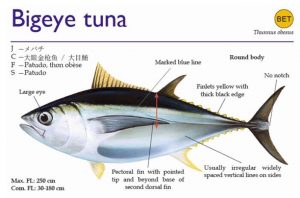
 Rigged Trolling Flexi Spreader Bar Topwater
Rigged Trolling Flexi Spreader Bar Topwater 36″ Skipjack Hybrid UV 8″ Blue & Pink Mackerel Baits
36″ Skipjack Hybrid UV 8″ Blue & Pink Mackerel Baits Mini Spreader Bar
Mini Spreader Bar Big Eye Rocket 9″
Big Eye Rocket 9″ Penn Tuna Fishing Rod & Reel Combo
Penn Tuna Fishing Rod & Reel Combo View Best Tuna Fishing Lures
View Best Tuna Fishing Lures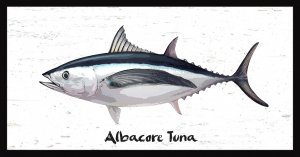
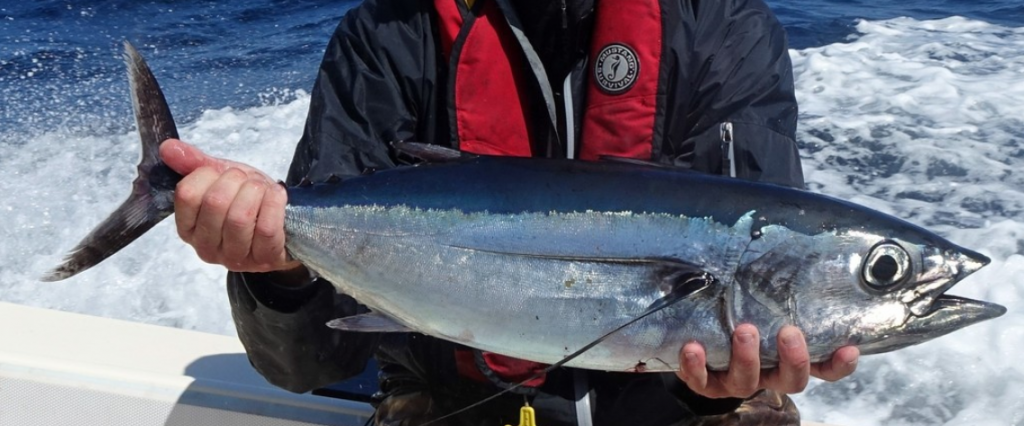
 Fishing Pliers and Knife Combo
Fishing Pliers and Knife Combo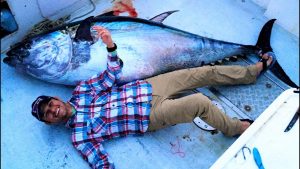
 Saltwater Trolling Lure for Tuna
Saltwater Trolling Lure for Tuna Tuna Fishing Shirt
Tuna Fishing Shirt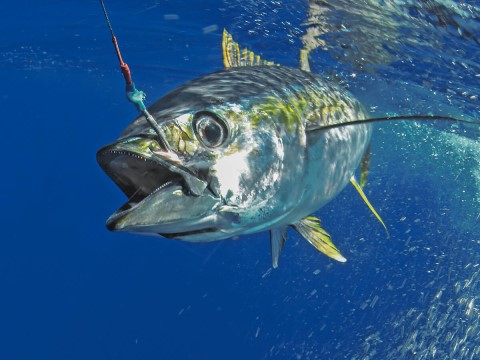
 Cedar Plugs Tuna Fishing Lures
Cedar Plugs Tuna Fishing Lures Stainless Steel Fishing Leaders
Stainless Steel Fishing Leaders Fishing Rod Holder
Fishing Rod Holder Lures Bait Rig Or Hooks
Lures Bait Rig Or Hooks